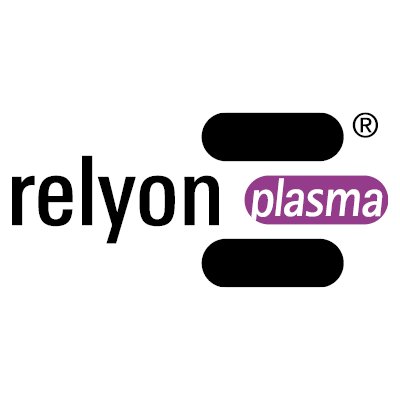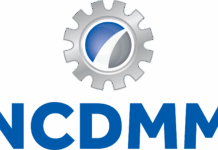Using innovative back-contacting, manufacturers of crystalline solar cells and photovoltaic modules are pursuing their aim of increasing the energy yield. At the same time, plasmadust technology solves the problems that have existed until now of applying the busbars. This is because the innovative coating process enables solvent-free, dry and non-contacting deposition of the cell-bound busbars directly onto the aluminium layer. All without subjecting the silicon wafer to thermal stress. Reinhbusbarsausen Plasma will present the new plasmasun coating system for the application of busbars at the SNEC in Shanghai.
Higher efficiency at lower costs – essential criteria for the competitiveness of photovoltaic modules. To optimize both, contacting of the latest generation of crystalline solar cells is carried out exclusively by way of the back surface. The aluminium layer usually applied to the back surface of the wafer by the PVD (physical vapour deposition) process is characterized by excellent electrical conductivity. The problem until now, however, has been application of the busbars. This is because the traditional procedure – silk-screen printing of solderable silver pastes – cannot be used due to lack of adhesion on the PVD aluminium. What’s more, the additional thermal stress arising when burning off the binder can have an adverse effect on the quality of the silicon wafer. This is where the unrivalled plasmadust technology developed by Reinhausen Plasma comes to the rescue.
Solderable layers with maximum adhesion
It is possible using the dry, solvent-free coating process to deposit various solderable metal alloys as micropowders or nanopowders directly onto the aluminium layer from a cold.active plasma at atmospheric pressure. This may be in the form of lines or dots according to the cell design. Regardless of the busbar’s shape, it is possible to achieve reliably reproducible layer thicknesses that exhibit adhesion values greater than 2 N in the peel test. The PVD contact layer is neither damaged nor contaminated by the coating process.
The Regensburg-based company has developed a further plasma generator for layer deposition which works at ambient pressure and in which it is possible to control the energy input into the plasma over wide areas. This means that the temperature of the plasma hitting the surface of the solar wafer can be kept very low: it is measurably below 100 °C. The result is very gentle coating of the substrate with a comparatively low energy requirement.
Specially developed atomizer/conveyor technology ensures a continuous supply of the coating powder. At the same time, the powder agglomerates are only broken up by the input of energy immediately prior to their injection into the plasma jet. This ensures that the powder particles are introduced into the plasma absolutely evenly. The particle flow may be adjusted according to the application.
Cost optimization due to coating materials
Powders of copper and tin as well as silver alloys are currently available as coating materials for the application of busbars. Compared to conventional silver pastes, this means noticeable cost savings because considerably less silver or no silver at all is required in the plasmadust process. Copper, for example, offers greater wettability and adhesive strength at lower costs. Tin, as the most cost-effective alternative, also delivers impressive results.
Plasmasun – busbar coating of up to 2,400 wafers/hour
Reinhausen Plasma will present the new plasmasun system at the SNEC which will be held in Shanghai from 22 to 24 February 2011. The system has been specially developed for the coating of solar wafers for back-contacting. It enables the application of a freely selectable number of busbars onto mono and polycrystalline wafers of any size and thickness. The plasmasun system is designed for a throughput of up to 2,400 wafers/hour.
Metallization of solar wafers
The plasmadust process is also available as an alternative if the entire back surface of the cell is to be metallized. The deposition of an aluminium layer between 10 and 20 µm thick is carried out at high process speeds. The relatively large surface of the nanometer to micrometer-sized powder particles (grain diameter between 100 nm and 20 µm) enables them to melt sufficiently at comparatively low temperatures. As a result significantly less energy is used in the plasmadust process than in conventional processes. For example, only around 1/10 to 1/100 of the energy required for thermal spray processes is needed to metallize an area of one square metre. At the same time, the process offers the opportunity to exert a positive influence over the aluminium’s solderability during metallization of the back surface by adding appropriate alloy systems.
plasmadust® and plasmasun™ are trade marks of Reinhausen Plasma GmbH which will be exhibiting at the SNEC in Hall E 5, Stand 535 .
About Reinhausen Plasma GmbH
Reinhausen Plasma GmbH is a subsidiary of Reinhausen GmbH, the global market leader and technology leader for the regulation of high-power transformers. Both companies are based in Regensburg. Reinhausen Plasma sees itself as an innovative supplier of plasma solutions for surface finishing and coating. The company sets new standards in cleaning and surface activation using plasma thanks to the development of its cold.active atmospheric pressure plasma tools, plasmabrush and piezobrush, which stand out due to low temperature, slow gas speed, the plasma’s extremely precise ability to enter cavities and the high purity of the gases. The patented plasmadust process means that for the first time ever it is possible to coat and metallize 2- and 3-dimensional components made from virtually any materials energy-efficiently and without using solvents (VOC-free).











































